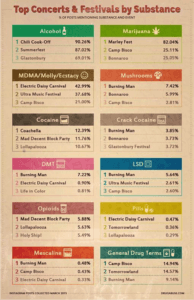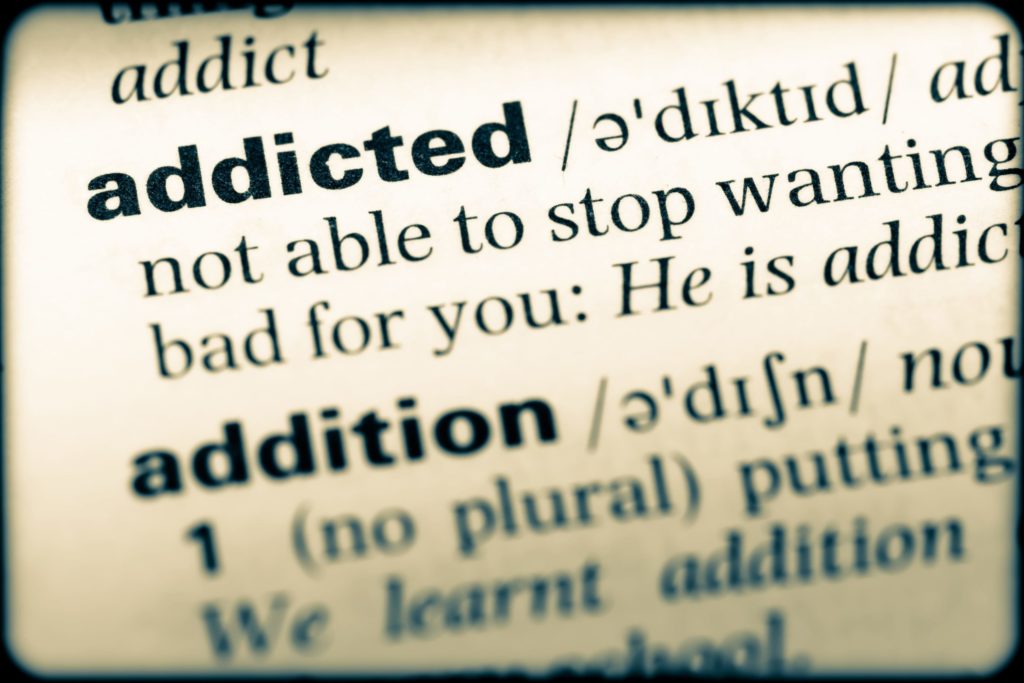Much ado was made about nothing this summer when a video surfaced online of Malia Obama *maybe* smoking a joint at the Lollapalooza music festival in Chicago. While there are legal and health consequences for marijuana smokers, it’s hard to imagine the media being interested in the video if the young woman didn’t have the last name Obama. While Twitter was ablaze with comments about Malia, there were more serious issues at play.

Over the course of the four-day music festival, 268 concertgoers were hospitalized, most of them due to “alcohol-related ailments,” according to the Chicago Tribune. Dr. Karen Mangold, who works in the pediatric emergency room at Lurie Children’s Hospital, told the newspaper that many of the patients she treated were intoxicated teenagers. Further, she said, “we seemed to see a lot more drug ingestions on top of the alcohol.”
Drugs and the First Big Music Festival
Drug and alcohol overdoses at music festivals are nothing new. Woodstock was notorious for the free-love, free-drug attitude. “There was a lot of drug stuff — overdoses, acting out, puking and drinking,” Joey Reynolds, then a 22-year-old Top 40 DJ, recalled. Despite the rampant drug use at Woodstock, however, there was only one fatal overdose (a man who had used heroin). Nearly 50 years later, hospitalizations from drug overdoses at music festivals are rampant. Headlines like “At Least 2 Dead and Nearly 60 Others Hospitalized After Florida Music Festival” and “24 Hospitalized in Drug Overdose at Ohio Music Festival” are tragically commonplace in the days following big music festivals.
Why Is It Worse?
Several factors contribute to the exponential number of overdoses at music festivals in the last few decades — one being the sheer number of them. Woodstock was the first multi-day, multi-act festival of its kind. Now, hundreds of these gatherings take place every year, especially in the summer months. In 2015, 32 million people went to at least one U.S. music festival. With so many more people attending music festivals, more people are likely to suffer an overdose. It’s not just the increase in shows and attendance that results in more overdoses, the kinds of drugs being used are significant as well. A study referenced on Billboard examined social media posts from various music festivals to determine what kinds of drugs they attracted. While mentioning drug use on social media certainly isn’t a foolproof way to determine what’s actually being consumed, the study highlights the prevalence of dangerous drugs at almost every event.
EDM and Raves
Although they are often lumped into the same category as music festivals, raves tend to differ from the standard multi-day festival formula. Many music festivals feature EDM (electronic dance music) on one of the stages, but raves exclusively feature EDM. Raves also differ from music festivals in that they are generally all-night dance parties whereas many of the performances at festivals take place during the day. For many, raves are synonymous with the drug(s) MDMA, Molly and Ecstasy. The FBI warns that “Raves are one of the most popular venues where club drugs are distributed,” and, “Raves are frequently advertised as ‘alcohol-free’ parties with hired security personnel. Internet sites often advertise these events as “safe” and “drug-free.” However … numerous overdoses are documented at these events.” Of course, since the event is advertised as “drug-free,” organizers are often loathe to admit the drug use or overdoses that do occur. Further, the FBI claims that organizers are more concerned with monetizing every aspect of the event rather than safety. It asserts, “Rave promoters capitalize on the effects of club drugs. Bottled water and sports drinks are sold at raves, often at inflated prices, to manage hyperthermia and dehydration … cool-down rooms are provided, usually at a cost, as a place to cool off due to increased body temperature of the drug user.”
What Steps Are Being Taken To Curb These Dangers?
Some festival organizers are working to increase the safety at their events. The primary tension for city officials and festival organizers is between harm reduction and attempting to prohibit drugs at their events. On the harm reduction side are organizations like Dancesafe, which try to promote education about the risks and side effects of different drugs as well as pill testing (to ensure that a drug is the substance the consumer intends to take). Stricter legislation like the 2003 RAVE Act has been criticized by some as contributing to drug-induced deaths by prohibiting safety measures like free water and “cool-down” tents. While there is a long way to go, it appears that some efforts have been implemented that please both harm reduction and drug prohibition advocates. In March 2016, Los Angeles County adopted measures designed to improve the safety at “mass gathering events.” These include limiting events to people over 18, placing “amnesty boxes” at the entrances for people to give up illegal substances without penalty, and requiring organizers to provide educational material on the dangers of alcohol and drug use. If event organizers fail to meet the requirements, the county will have the authority to shut down the event. If these efforts prove effective in reducing the number of illnesses and deaths at music festivals, hopefully other areas of the country will notice and follow suit. By Katie MacBride

